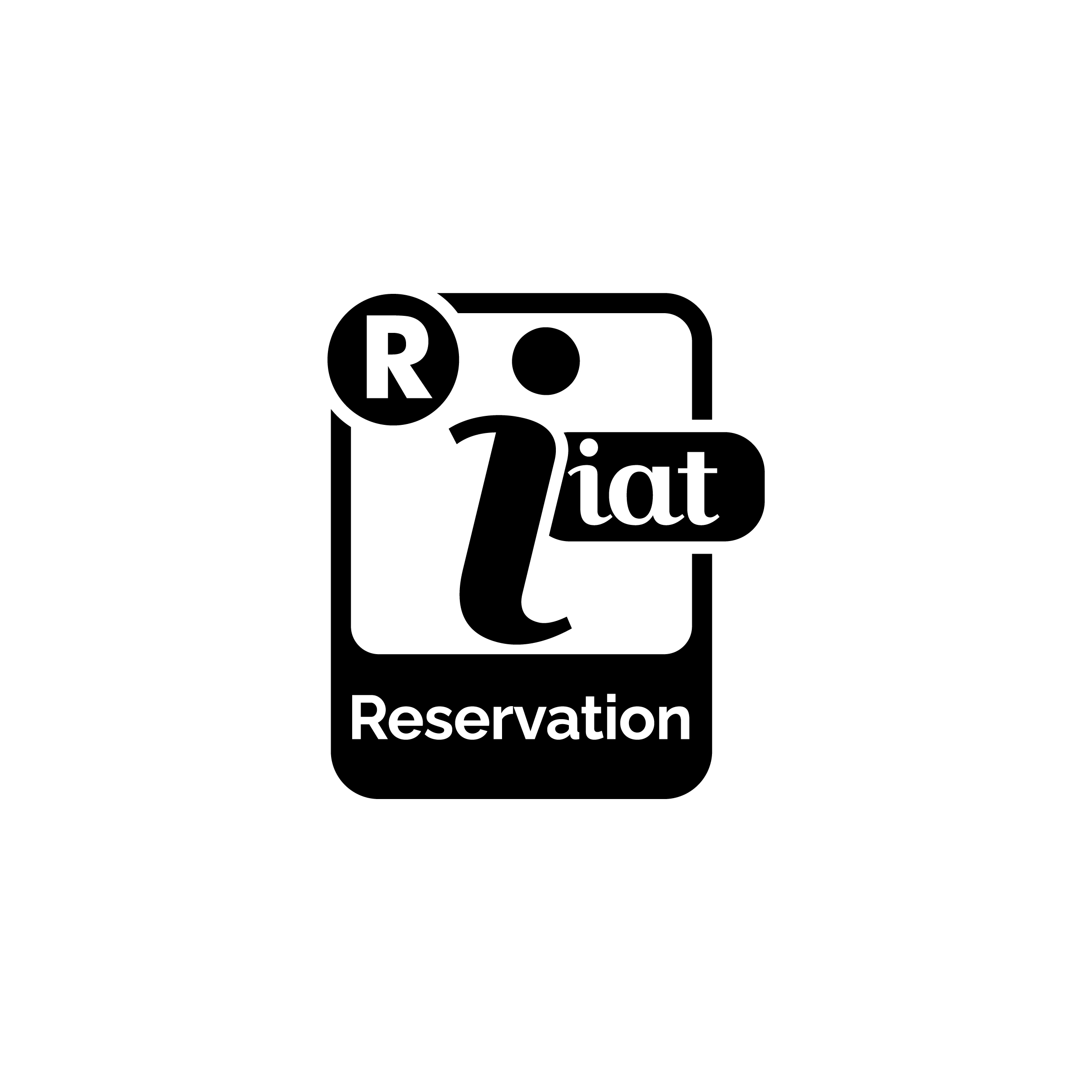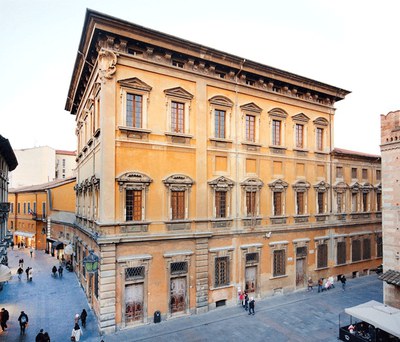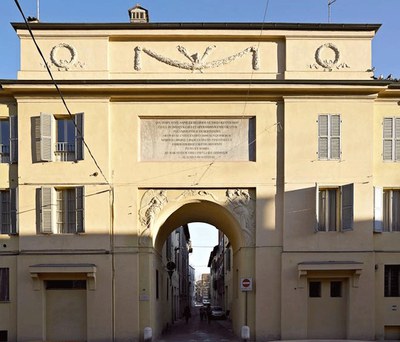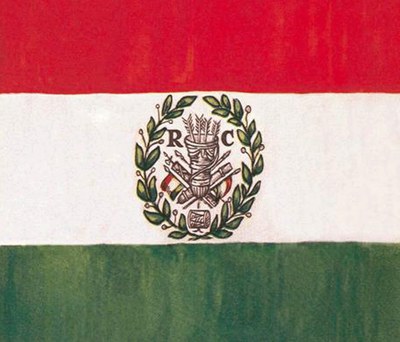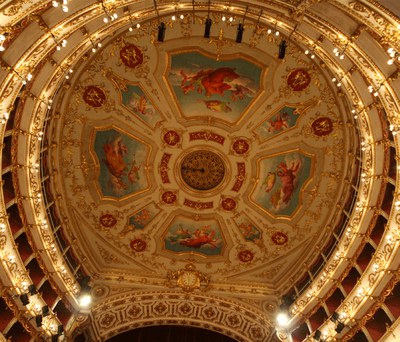Tricolour Flag tour
Information
42121 Reggio Emilia
Route in the town centre.
Route characteristics
Route length: 5 km
Travelling time: 1 hour
Difficulty level: easy
Route description
Reggio Emilia is known throughout Italy, and beyond, as the town where the Tricolour Flag, the national italian flag, was born. Why Reggio Emilia? What prompted the members of the cities of Reggio Emilia, Modena, Bologna e Ferrara to meet in Congress in the former ducal archive, then Tricolour Flag Hall?
Let's discover this tour! Step by step you will understand how the political events of Reggio Emilia are deeply linked to the evolution of the monuments and buildings of the town centre. About 1 hour walk in search of those ideals of freedom and independence that led Italy to its full achievement as National State.
The Este dynasty
At the end of the XVIII century, Reggio Emilia was part of the Este family domain. The headquarter was in Modena, the capital of their territories. The economical and political condition, due to the permaning war campaigns, leaded to the end of wool craft and riduced the silk craft, primary activity in Reggio Emilia.
The guilds of Reggio Emilia
At the beginning of the XVI century Lucrezia Borgia, duchess of Ferrara, Modena and Reggio Emilia, personally patronized the introduction in town of the silk craft, destined to become a strong occasion of enrichment for the city. Both the silk craft and the wool craft were possible thanks to the Canale Maestro: an artifical stream which served the spinning wheels. There are signs of those ancient and very important guilds in two building in the town centre: Palazzo dei Mercanti del Panno (Cloth merchants Palace) characterized by a beautiful capitel ram-shaped and Palazzo Busetti (see picture), inspired by the roman tipical architecture and built at the middle of XVII century by the wealthy family Busetti, producers and merchants of silk.
The political disagreement
At the end of the XVIII century the general discontent leaded to the first manifestation of political dissent. In the spring of 1796 the Este duke, just informed of the entrance of the troups of Napoleon in Italy, quickly abandoned Modena to refuge in Venice, leaving armistice negotiations with the French to a regency council.
Arch of the Follo and the arrival of Napoleon to Reggio Emilia
The original project of the Arch of the Follo dates back to 1797 and was made by the architect Domenico Marchelli, The Monument was part of the renovation of the area northward the Via Emilia. On the front of the arch in fact there is still the original inscription in latin that recall how the citizens of Reggio Emilia, in honour of Napoleon, renovated that part of the city with public money. The arch presents two laurel garlands and a festoon at the top and two neoclassical angels on both sides of the archway. It was built in 1805 to recall the passage of Napoleon in Reggio Emilia.
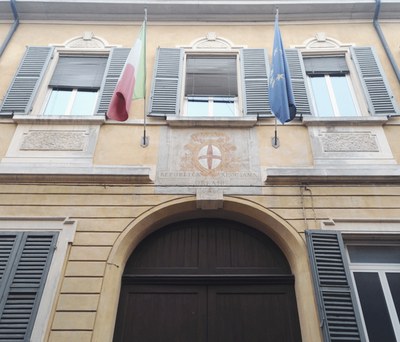
The tree of freedom
August 26, 1796, on the main square of the town, was placed the tree of freedom, as definitive and explicit presidio. After 4 centuries the town set itself free from the ducal power. On the facade of some buildings the emblem of the comune and the writing "Repubblica reggiana" replaced the eagle of the Este Family.
The emblem of the Municipality
The fresco depicting the emblem of the Municipality present on the façade of the San Vincenzo School and dating back to the 1796, has an absolute historical importance because it is the unique remaning example of the rapresentative symbol of the Municipality of Reggio Emilia during the period of Reggio Emilia Republic (proclaimed August 26, 1796).
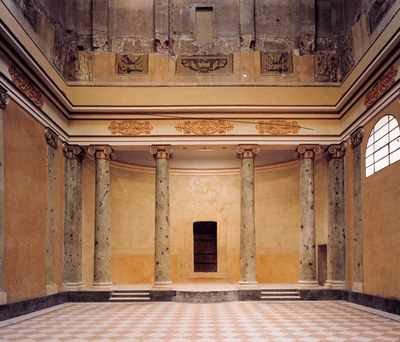
The Cispadana Republic
Between 16th and 17th October 1976 100 representatives of the Republics met in Modena to vote the constitution of the Cispadana Republic with the election of four temporary governaments: Reggio, Modena, Bologna and Ferrara. The subsequent congress took place after a few days in Reggio Emilia. Here already the day after the first congress were removed the gates of the jewish ghetto where the jews of Reggio Emilia had been closed since 1671, for ducal will.
The jewish ghetto
The creation of the jewish ghetto dates back to 1669 when the duchess Laura Martinozzi decided its constitution and the moving of all the jews of the city in the streets "dell'Aquila" (whose name derives from the eagle, symbol of the Este family, placed above the ghetto entrance), "Monzermone", "Caggiati", "della Volta" (so called because of the voult where there were one of the door of the ghetto), "Gennari", "San Rocco". With the new austro-ungarian domain (1814) jews were obliged to stay in the same streets but there wasn't any closing gate. Only from 1859 Judes of Reggio Emilia obtained the same rights of all the other citizens of the nascent Italian state.
The birth of the Tricolor flag
On 27th December 1796, the great hall designed by Bolognini to house the ducal archive, became the seat of the first italian parlament and, in it, was proclaimed the Reggiana Republic, one and undivisible. During the seat on 7th January 1797, chaired by the enciclopedist Giuseppe Compagnoni, the Tricolor was choosen as emblem of the Republic. The original Tricolor had orizontal stripes, on the french model and, in the center, a quiver with 4 arrows, symbol of the union of the 4 towns (Reggio, Modena, Bologna e Ferrara). The letters R C, initial of Cispadana Republic, were written on the sides of the quiver.
The colors
The emblems of the regiments of the military legion of Lombardy had colors strongly bound in the culture of the region: white and red were present in the ancient emblem of the municipality of Milan (red cross on white background), while green recalled the color used for the uniforms of the Civil Guards of Milan, since 1782. The same colors then were used for the emblems of the Italian Legion which collected the soldiers coming from Emilia and Romagna. This probably is the reason why the Cispadana Republic confirmed them on its flag.
The forbidden flag
During the three decades that followed the Congress of Vienna (1814 / 1815), the tricolor emblem was censored by the Restoration, but it continued to be raised as emblem of freedom all over Italy, until its complete confirmation.
The tricolor fresco
The vault of the Theatre Valli has 8 medals depicted by Domenico Pellizzi to celebrate the glory of the italian theatre. The characters are: Metastasio, Pergolesi and Bellini in the medal of the Comedy (left), Viganò and Gioia in the medal of Coreography (on proscenium) and Alfieri, Monti and Andrea Maffei in the medal of the Tragedy (right). An other detail of the decoration of the vault is about the fresco of Choreography: disguided but not much, the tricolor was well visible from all the seats of the theater exept the one of the duke who, from the royal balcony, had the view covered by the huge chandelier.
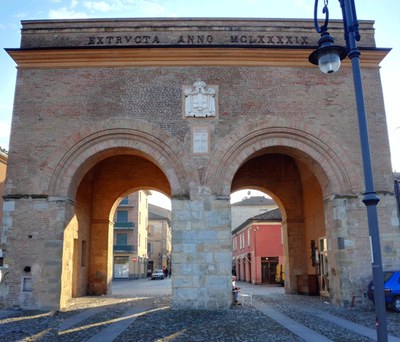
The "Quarantotto"
A rivolutionary wave crossed all the Europe, making of the 1848 the "year of miracles". The revolutions of Paris and Wien set up the insurrections of Milan and Venice. The citizens of Milan, in five days of struggles, forced the Austrians to retire from the city. The Pope Pius IX together with Carlo Alberto were cheered as liberators of Italy and their faces appared, in flags and patriotic foulards, associated with the Tricolor. Many tricolor flags started to wave again, in several cities of Italy, during the spedition of Garibaldi and his Thousand.
Porta Santa Croce
The restoration works of the medieval door started in 1858, with the economical help of the duke Francesco V Este. For this reason, the door was dedicated to the duke himself and emblems with the ducal eagle were hung on it. In 1859 the revolution exploded and, with the changing of government and the defeating of the Este family, the eagle on the door was changed into the Savoia cross. August 19, 1859, Garibaldi passed through this portal to reach the plain, collecting volunteers for his cause all over the Province.
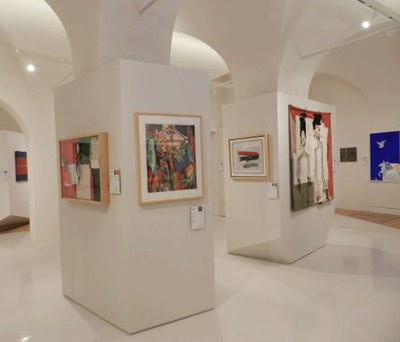
The history goes on...
The esposition is divided in two parallel lines: the history of the national flag, from its origin to the unification of Italy and the history of the political events of Reggio Emilia, from the birth of Reggio Emilia Republic in 1796 to the documents regarding the contributions of the citizens of Reggio Emilia to the battles for the national independence.
In 2017 then, on the occasion of a general restiling of the exposition and of the collection, a new section dedicated to the contemporaneity was inagurated. Beside a new workshop area, the huge group of works of art of the project "Novanta Artisti per una bandiera" is displayed on the ground floor.


